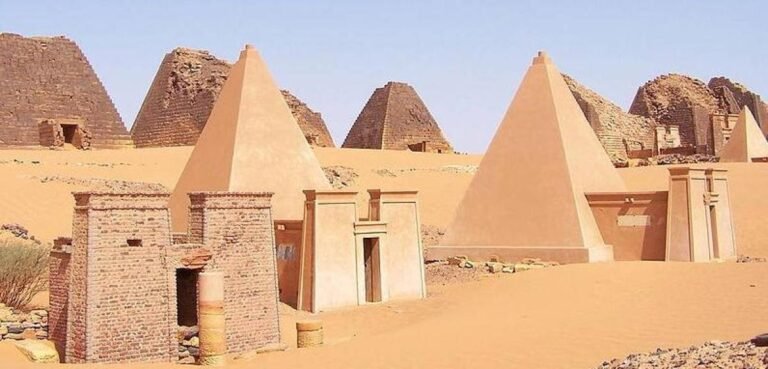Many of the most obvious threats exist at sites we already know of and are due to intensified weather in their respective regions. In the Nile River Basin, for instance, flooding is a natural part of the river’s life cycle, annually expected to bring rich alluvial soils to the surrounding landscape critical to the region’s agricultural practices. In 2020, however, unprecedented flood levels in Sudan shattered expectations and put numerous archaeological sites at extreme risk of destruction. One in particular, al-Bajrawiya, the site of the Meroë Pyramids and a two-thousand-year-old United Nations World Heritage Site critical to our understanding of the ancient Kush Kingdom, was nearly destroyed, saved only thanks to emergency measures taken by local authorities to lay sandbags and pump water away from the sites for multiple days. The same flooding event killed over 100 people and displaced more than 500,000.
Similarly, in Iraq, whose ancient lands are often deemed the cradle of civilization, drying riverbeds due to an increasingly hotter, dryer climate are allowing salty seawater to intrude further inland and soak deep into the earth. While salt is naturally occurring in much of the land and waters of Iraq, this higher concentration is causing catastrophic damage to cities such as the famous Babylon. When soaked up into the mud bricks of the city’s structures, the salt weakens and breaks down the bricks, eroding them from the inside. If a solution is not sought, this will prove cataclysmic to the structural integrity of this incredible site and entire buildings, which have thus far survived for millennia, will be at risk of complete collapse. The problem of Iraq’s dwindling rivers is only made worse when factoring in how human reliance on these increasingly precious water sources is only going to skyrocket as the region becomes more arid and inhospitable to human life.
While these examples demonstrate how the intensification of pre-existing climate patterns present increased dangers for historic and cultural sites, there are also two new climate changes that are causing the most significant threats to the greatest number of sites and objects: rising sea levels and the melting arctic.
It is an established scientific fact that sea levels are rising and that by the year 2100 altered shores will have displaced millions of people from coastal cities and settlements. The change in global coastlines will also cause the destruction of countless ancient and historical sites. Many sites and modern cities will simply vanish into the oceans and seas with their monuments such as Venice. While The Floating City has always been at risk of Acqua Alta, or high water, strong storms like one that hit the city in 2019 have become more frequent in recent decades.
Other cities will erode to nothing as sea levels rise and bring more damaging and intense storms. Skara Brae, for example, is an incredible example of Neolithic culture in the Orkney Islands of Scotland which has helped us to understand how humans lived during this period of our deep past. The discovery of the site was in part due to an intense storm in 1850, however, as storms become more frequent and destructive, another such event could irrevocably damage or destroy the site beyond repair or study.





